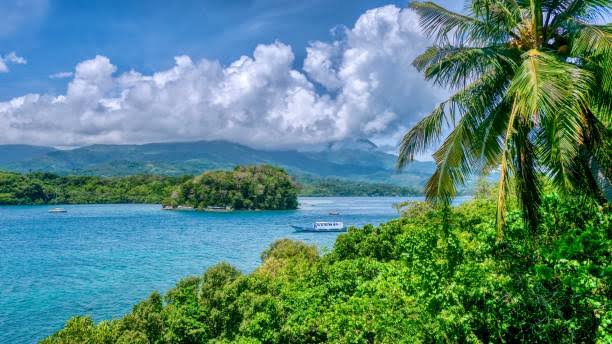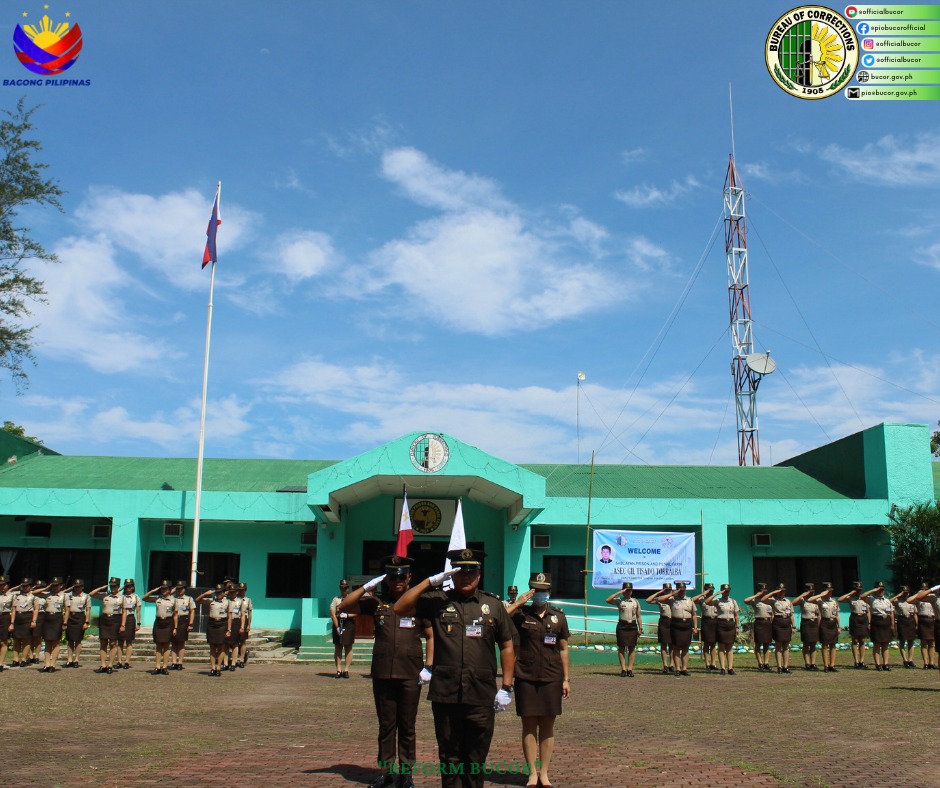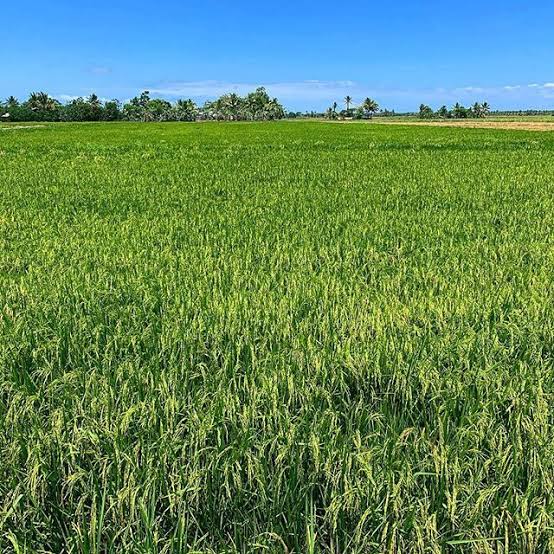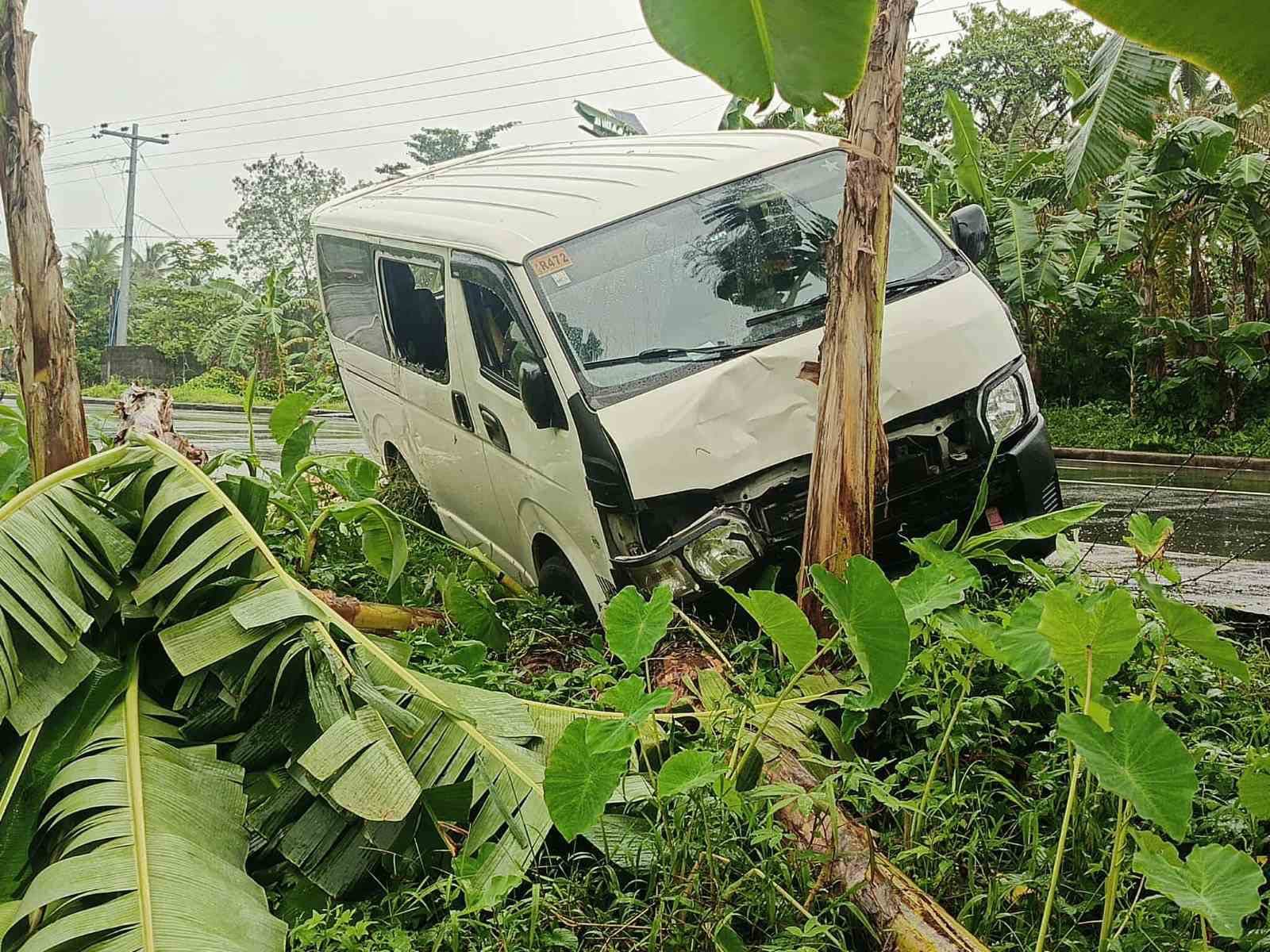(This article was penned at the height of COVID 10 pandemic in 2020)
By Romel “Direk” Ferriol Bernardo
Businesswoman Flor Maliwanag-Keh should have been the busiest and proudest business owner by now. Her two-hectare integrated eco-tourism complex in Mansalay, a picturesque town at the southern tip of Mindoro island, was slated to open in the last week of May this year. Christened “La Sersita Casitas Water Spa Beach Resort,” it is Flor’s way of paying tribute to her loving parents, the late Sergio and Teresita, who both served as chief executives of the locality.
“I worked as a teller first and later as a country assistant manager in a remittance and courier company with offices in Asia and Canada. My Taiwanese husband was a production manager for a factory; he started there single pa siya, kaya medyo malaki ang separation pay niya when that factory transferred to China,” recounts Flor of her stay in Taiwan, still vivid in her mind.
Maximizing their educational background as HRM graduates at the University of Sto. Tomas, the couple decided to venture into the food business servicing fellow OFWs in Taiwan.
“We were one of the leading Filipino caterers in our industrial area. We did that for 14 years,” recalls Flor.
Later, the couple established a financing company in Quezon City with a branch in Hong Kong that remains operational until now.
“I traveled a lot because of my job before. Pagod, takot at lungkot ang puhunan ko.”
La Sersita Casitas Water Spa Beach Resort was the culmination of Flor’s struggling days as an OFW and brave exploits as an entrepreneur. Her dream project is now her source of pride and joy, and rightfully so.
Nestled within a 155-hectare private estate, Flor’s project site is gifted with nature’s splendid combination of lush forests, rich biodiversity including wild macaques, magnificent vistas of the tranquil Tablas Strait, and boundless access to the powdery white sands of Casabangan Bay. This multi-million peso undertaking sits across the 227-hectare law-protected water sanctuary that’s teeming with vibrant corals, emerald green seagrass, and schools of tropical fish.

But how ironic that nature, which presented Flor with the extraordinary setting for her dream project, could also cause her excruciating heartbreak.
“Sayang nga, natigil kasi ng 2 months. Nag-stop kami ng March 17 (because of the coronavirus pandemic). Supposed to be, this end of May ang soft opening,” exclaims the lady entrepreneur in an exclusive online interview with mindorotv.com.
While the two-story 12-room hotel building is nearing completion, the two-month government-imposed lockdown has put the construction of the rest of the integrated resort facilities behind schedule. The leisure destination’s other fancy amenities such as a spacious al fresco restaurant, a sea salt-chlorinated infinity pool, private cabanas with pools, picnic area, water spa, and a 500-seater events place remain unfinished – with more than 50% of works needed to make them guest-ready.
Now, seeing the vast and desolate construction site in the week of its supposed official public launch, Flor couldn’t help but get emotional.
“Medyo depressed din kasi excited na kami sa soft opening, kaya madedelay po ang opening, maybe October or November na po,” continues the unmistakably dejected but still positive nature tourism advocate.
Flor’s story reflects the sorry state that befell the once-thriving tourism sector. As an industry that generally depends on a high volume of paying guests and customers, business owners and operators have had to make drastic business decisions. One is to put breaks on their ongoing activities that will further reduce depleting resources. The other one is to padlock their establishments’ gates not only to curb the fast-spreading coronavirus pandemic but to cut their losses too.
“Very bad time for tourism worldwide. For one, travelers are on lockdown in their own countries. 80% of airlines have grounded their fleet and slashed more than 50% of their plane crew and ground staff. Here, 80% of hotel bookings were canceled,” notes highly respected travel authority, Randy Urlanda, who has been exploring the Philippine countryside and its attractions as a writer and later as editor of the Philippine Panorama, Manila Bulletin’s Sunday magazine.
COVID Impact on Philippine Tourism and Labor Sector
Noted tourism operator Connie Mamaril describes how badly hit the local tourism is by the rampaging COVID-19 pandemic.
“Travel tourism (including hotels) is classified under Category 4, the last to be opened. Right now, some countries are still on lockdown until further notice,” relays Ms. Mamaril.
As an owner of Regent Travel Corporation, one of the oldest and most credible travel agencies in Manila, she likewise paints a grim picture for travel agencies that depend on flight bookings, visa and hotel accommodation assistance, and tour packages.
“A lot of travel agencies will close shop, retrench employees since there are no incoming flights since March 15.”
Veteran travel writer Urlanda echoes Mamaril’s observations by illustrating the situation in Boracay, the country’s most popular offering among the foreign market.
“Boracay and other island resorts have no tourists except those caught there by lockdown. Tourism, which is also the bloodline of our economy, has suffered the most from food suppliers down to the hotel janitor. Hotels have shut down leaving thousands of their employees jobless.”
COVID and Oriental Mindoro Tourism
While the provincial government of Oriental Mindoro has yet to release statistics on COVID’s impacts on the province’s tourism sector, the pandemic has effectively transformed many local tourist destinations and thousands of establishments into ghost towns.
The unspoiled Buktot Beach with Boracay-like sand, Mansalay’s most popular tourist attraction, is eerily empty. “Sa Buktot po pag summer, March to May, ay umaabot sa 10,000 ang mga bisita,” reveals tourism officer, Jun Generoso. But with tourists nowhere to be found, more than a dozen resorts and lodging houses have closed in the municipality, affecting close to 100 personnel.
Regular tourism workers are not the only ones bearing the brunt of the pandemic in the said town. Several Hanunuo Mangyan artisans who craft intricate native handicrafts now sit idle since there are no buyers for their native products such as ramit, baskets, bracelets, and bags.
The flourishing Calapan City has its share of a tourism downturn due to the pandemic. Its shopping malls and huge events and entertainment centers that were bustling with activities just three months ago are practically abandoned structures nowadays.
In recent years, Mayor Arnan C. Panaligan’s vision to market the city as an alternative destination for training, exhibits, and conventions has been gathering steam. On top of established venues for large social events like the Filipiniana Resorts and Hotel, the Panaligan administration has recently attracted investors who built massive structures intended for leisure and mass gatherings. These include the magnificent Mahalta Resorts and Convention Center owned by noted radio personality and professional training guru Carl Balita; the chic Huanying Hotel, and the adventure theme park Jolly Waves Water Park and Resort both owned by industrialist Jolly Teng.
And in January this year, Mayor Panaligan led the groundbreaking of the P100M Calapan Convention Center. Expected to be the largest events venue in the entire Mindoro that could spur further tourism developments in the province, the colossal facility could seat up to 4,000 spectators.
Like a fly in the ointment, the coronavirus’ stinging bite poses immense risks to an otherwise promising branding of the city in the tourism sector.
Among the towns in Mindoro, the scenic Puerto Galera, whose economy largely depends on tourism, expectedly got hit the hardest. This town’s Business Permit and Licensing office records indicate that the Enhanced Community Quarantine has closed virtually all of the town’s 1,266 business establishments. These include resorts, hotels, restaurants, pizza and ice cream parlors, bars, dive shops, souvenirs, and gift shops, and more. The pandemic has also taken its toll on the tourist town’s human capital. The same records indicate that 3,624 personnel working as waiters, receptionists, cooks, bellboys, lifeguards, massage therapists, and tour guides are now practically jobless because of the pandemic. Moreover, the pandemic has also affected 1,724 individuals composed of boat operators and public vehicle drivers whose services are vital in Puerto Galera’s tourism-based economy.
One business owner who communicated with mindorotv.com vividly illustrates the situation in the resort town. “Bagsak sobra, nakakaiyak. Wala po lahat work. Yung Sabang (Beach), walang tao. Yung White Beach, sobrang white na dahil kahit local residents hindi maka-swimming.” Even her resto-bar that used to attract local and foreign diners is now deserted. “Sarado po, nag-o-online lang ako ng pa-order. Kawawa staff. Di naman kaya mag-operate talaga.”
The Future of Local Tourism
Industry insiders predict that it may take one to three years before we can expect any semblance of normalcy in the COVID-ravaged tourism sector. “International or global tourism is projected to bounce back only in the middle of 2021,” predicts Regent Travel Corporation’s Executive Director Connie Mamaril.
Offering a more conservative take, travel author Randy Urlanda believes that the resurgence of the tourism sector is dependent on how long the pandemic will persist. “Our tourism industry is expected to recover in two to three years when the pandemic has settled down.”
In an era when social distancing becomes a new normal, the revival of the once-thriving tourism sector also highly depends on tourists’ level of confidence to go out and explore the world again.
Department of Tourism Secretary Bernadette Romulo-Puyat is pushing for the revival of domestic travel to shore up local economies that were devastated by the global health crisis. But with the pandemic still in our midst, her department also plans to roll out a set of strict health protocols that tourists and other stakeholders must observe once the government lifts the lockdowns and allows domestic travels to resume.
Some of these safety measures include regular sanitation and inspection of tourism facilities, provision of PPEs and disinfecting items for tourism workers; strict observance of physical distancing; and regulation of customer capacity in places of accommodation.
Tourism-allied industries have likewise started to introduce their ideas to help rejuvenate the sector battered by the coronavirus.
The Air Carrier Association of the Philippines (ACAP), which counts among its members major local airlines like Philippine Airlines and Cebu Pacific, plans to implement a couple of safety measures to help revive the industry battered by the coronavirus. Among other things, ACAP wants the tourism sector to embrace its suggestions, such as limiting the number of passengers inside the airport terminals to those with confirmed flights and a temperature check on and mandatory use of masks for customers. Earlier, the country’s flag carrier modified its flight attendants’ traditional uniform to a COVID-resistant PPE-like costume.
Agro-tourism Described by DOT Sec. Romulo-Puyat as a “catalyst for sustainable tourism and inclusive development,” farm tourism has been steadily growing in the country in the last few years.
Since COVID-19 will persist for a while, some tourism industry watchers are pinning their hopes on this sunrise industry that gives travelers a unique “farm experience” and provides farmers “extra income” and help farm communities in general.
Although still considered as a niche sector, farm tourism has a certain appeal for those who want to escape the hustle and bustle of urban life. It also gives people a chance to engage in relaxing farm activities such as planting, vegetable and fruit picking, plot cultivation, and animal feeding. For some, it’s an opportunity to relive their best childhood memories in the calming presence of nature.
Foremost travel writer Randy Urlanda, who has written about two emerging farm destinations in Laguna and Batangas, thinks agri-tourism could prosper again after the pandemic.
“Once public transport is normalized and there’ll be no more restrictions to travel, I believe farm tourism could recover because it’s about food which guests could buy and consume on-site.”
This advocacy ensures that farmers get extra income by selling their fresh produce to visitors; it also keeps them inspired to help achieve the country’s food sufficiency.
In Oriental Mindoro, organic farming pioneer Nelson Gabutero is not only promoting the natural way of land preparation for raising grains and crops. He is also spearheading farm tourism to encourage Mindoreños to go into natural farming. His 30-hectare Gabutero Organic Farm reputed to be the only certified and biggest organic rice farm in the country is a must-visit destination for those who wish to combine education and recreation in the field of agro-tourism.
Health Advice for A Safe Travel
If and when domestic tourism resumes, travelers need to go back to basics, advises noted local physician, Dr. Miguel “Mike” Soller, who recently resumed his private practice in Bansud. “That means maintaining social distancing, keeping ourselves healthy and hydrated, and taking one’s vitamins.”
In outdoor settings, Dr. Soller reiterates the importance of “washing one’s hands frequently, adherence to not touching the face and things, and wearing a face mask since droplets transmit coronavirus disease.”
But now that Oriental Mindoro has recorded a new case of coronavirus infection after becoming COVID-free for a week, Dr. Soller expressed concerns with the impending return of tens of thousands of stranded individuals to the province’s active seaports.
“Ok naman tayo sa Mindoro except sa mga lugar na may COVID cases. The problem is may mga pumasok na stranded individuals. Hindi natin sigurado kung carrier sila, kahit asymptomatic pa or no symptoms at all. It takes two to three weeks for us to know kung magkakaroon ng local transmission from them.”
Dr. Medel Vertucio, who owns Vertucio Birthing Center in Pinamalayan, shares Dr. Soller’s apprehensions.
“We’re COVID-free now in Mindoro, however, the battle is not yet over,” cautions the family physician, Dr. Medel Vertucio of Pinamalayan. “To travel safely and to avoid transmission: first and foremost delay if possible until the situation is adequately controlled; a vaccine is available in place.”
But if tourists are confident enough to travel out of town, the family doctor says preparations and planning are critical to a safe journey.
“Avoid going to sites with reported cases. Personal hygiene kits such as alcohol and liquid soap or sanitizers are a must as well as PPEs and face masks. Social distancing inside the van or car must be observed. There should be enough food and water for drinking and washing if there’s extra space. Bring a first aid kit and medicines for common ailments.”
The DOT’s laudable plan to revive domestic tourism, coupled with clear health protocols from allied industries, and practical tips from medical professionals, gives industry stakeholders a glimmer of hope that the once-vibrant tourism industry will eventually recover and regain its luster.
“I read an article that the DOT is planning to revive domestic tourism once magiging MGCQ na. Nag-start na kami and waiting lang ng materyales from Manila para makapag full blast na,” ends Flor Maliwanag-Keh, who now looks to the future with renewed faith and enthusiasm.









Write Your Comment